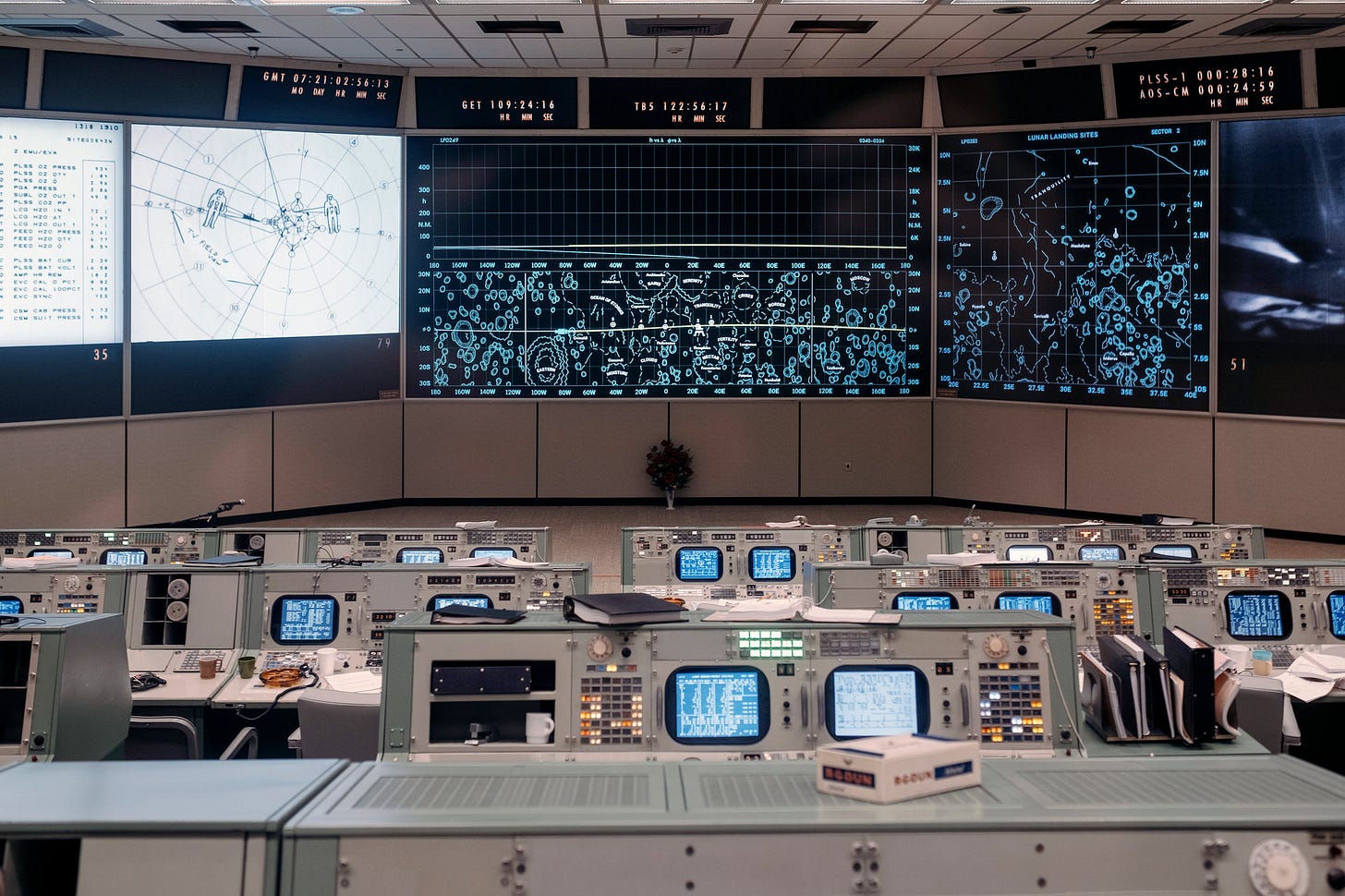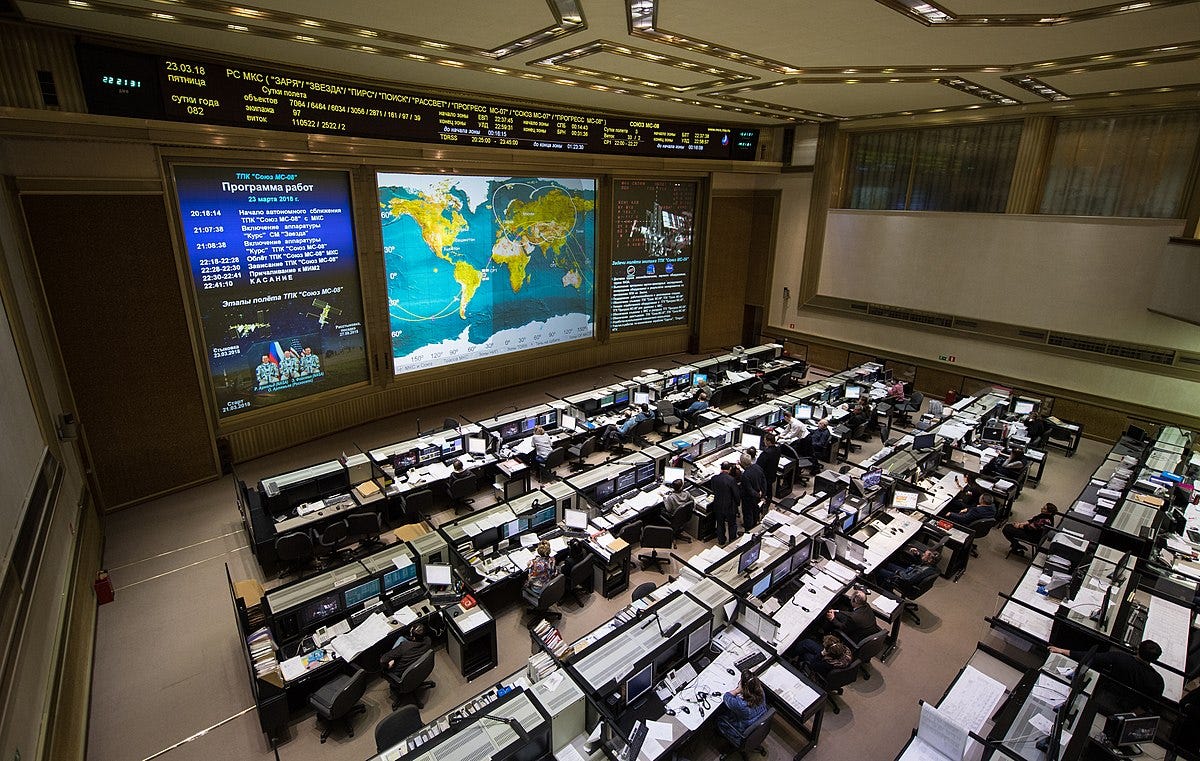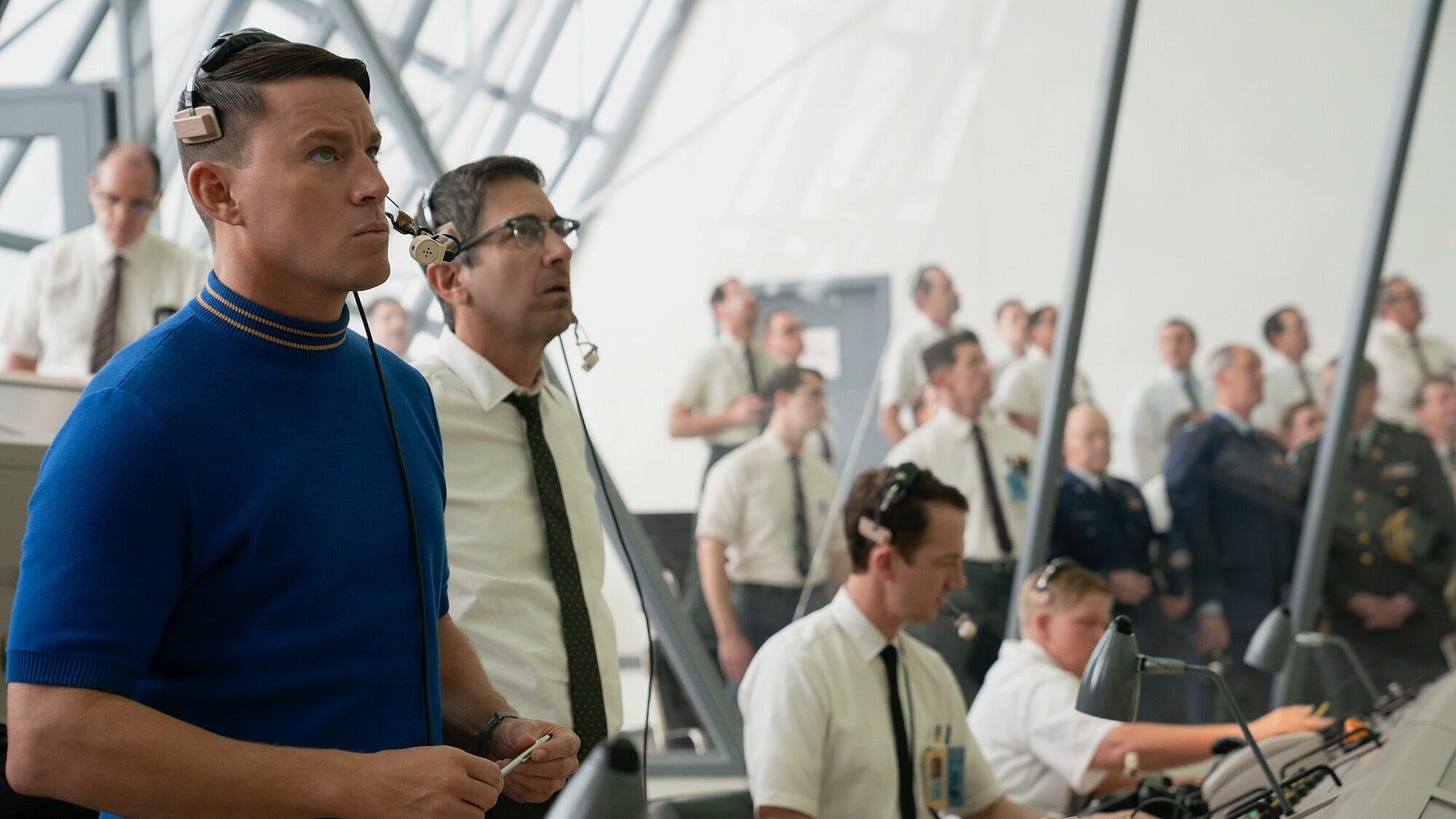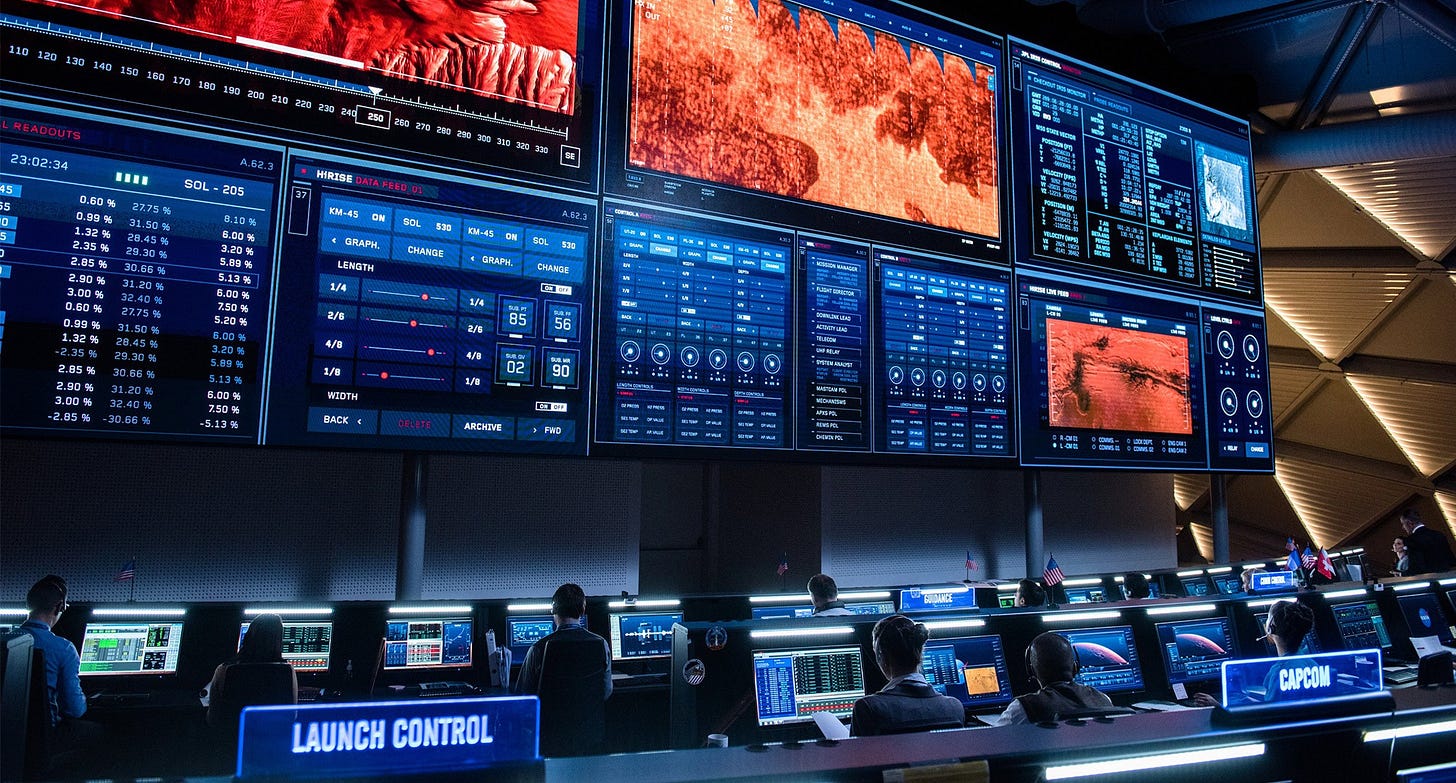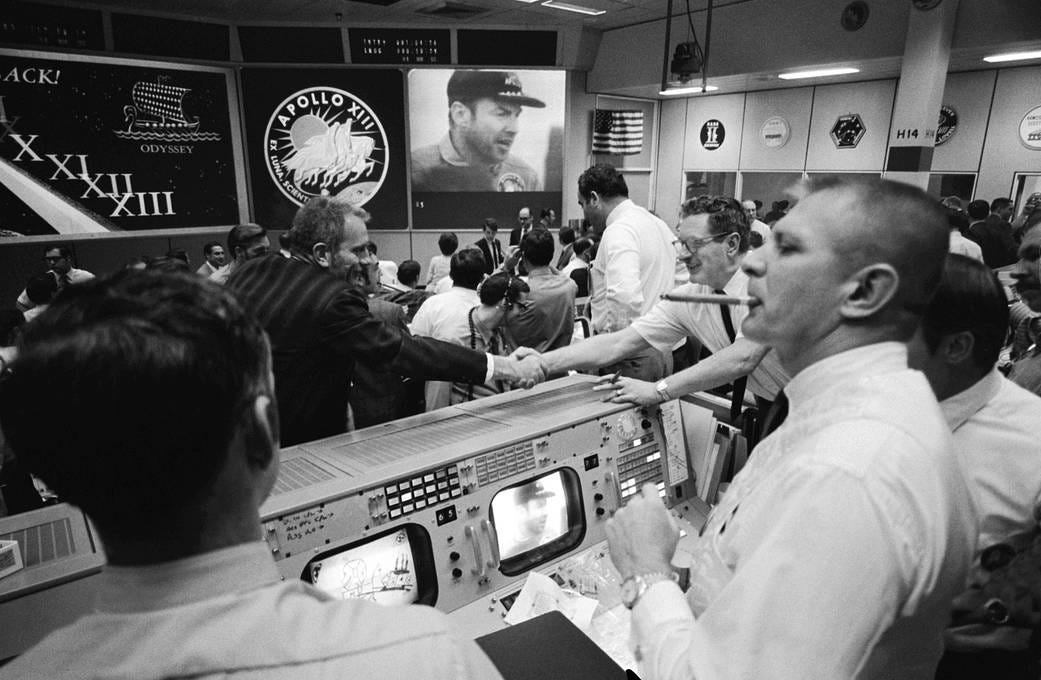Mission Control Center - brains of the Space System. How does it work?
Do you know how spacecraft are controlled? Even some schools have a Mission Control Center! Space Ambition co-founder featuring insights about his work experience in a Mission Control Center.
Issue 91. Astronauts 11 443.
We invite you to join the first professional investment community on AngelList focused exclusively on space tech investments: Beyond Earth Technologies
If you've seen movies that show the launch of a spacecraft into space - you've probably seen the always cool-looking room with huge screens from where the cool folks control the mission. This is the Mission Control Center (MCC) - the brains of any mission. In the 67 years since the launch of the first satellite in 1957 - Control Centres have changed a lot.
In this article, our co-founder Marat Airapetian, who has worked in a Mission Control Center for 4 years, will talk about what tasks mission control centers solve, what they consist of, and how to build your own mission control center (see also our previous article on how to build a satellite).
What tasks does the MCC perform?
The Mission Control Centre is the main control body for both the mission and the spacecraft. The main tasks of the center are as follows:
Data handling:
receiving and processing data from the spacecraft;
control of parameters of all spacecraft systems. Control centers receive data on the parameters of all spacecraft systems, track whether they are normal, and predict emergencies, if any;
determination of the spacecraft orbit based on measurement data;
prediction of communication sessions - spacecraft does not have continuous communication with mission control centers, so it is important to schedule communication sessions.
Decision-making and mission management:
elimination of emergencies. In case of abnormal situations, the control center makes emergency decisions to eliminate the failure and save the spacecraft;
transmitting commands to the spacecraft. The control center receives signals from the satellite and commands it in response.
Technical tasks:
technical support of communication sessions;
station-to-station data exchange - in case the control center has several radios in different locations around the world.
Modeling and prediction:
simulation of spacecraft performance in certain situations;
prediction of satellite motion parameters.
… other tasks for special missions like image processing, camera pointing, scientific instrument control, etc.
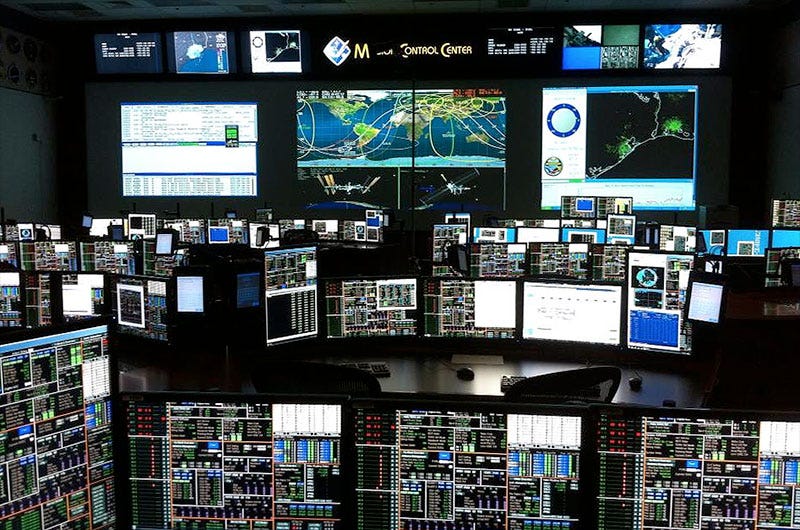
Who works at the MCC?
Operators controlling the satellite. Most often, each specialist in the control center is responsible for one specific satellite subsystem. Therefore, there may be a different number of specialists depending on the systems of the satellite. For example, an onboard computer specialist, a radio communications specialist, a thermal management specialist, a payload specialist, a flight control specialist, etc.
Depending on the task, your operators may be in the Mission Control Centre all the time, or they may come in as information is received and transmitted. Often this process is automated and no human is needed at all.
Of course, depending on the type of spacecraft and its tasks, the centers are quite different. For example, Cubsats’ control center is a small rooms with a couple of computers that could be easily installed even at school. The ISS control centers in Houston and Korolev (the two main MCCs that control ISS) are separate huge buildings with hundreds of specialists. In the case of manned missions, the control centers are much larger, because of doctors, psychologists, specialists in astronauts' schedule planning, etc.
How MCC works?
It depends on the task at hand. If the satellite is complex and large and requires continuous involvement of specialists, engineers work in shifts, but in such a way that the satellite is always under control. This is especially important for manned missions. For smaller satellites, the data acquisition process is often automated, and engineers only need to process the information and make decisions. Today there are even virtual control centers, and each specialist works on his system remotely.
Sometimes a payload is so complex that one instrument has its own control center. This is especially true for Mars rovers performing complex experiments. These experiments need to be supervised, so separate control centers are established.
Launch vehicles also have their dedicated control centers. Usually, until a satellite is separated from the rocket, the control center of the rocket manufacturer is in charge. After each satellite is undocked, the corresponding satellite control center takes over the job. You've probably seen a recent movie “Fly me to the Moon”. It vividly depicts the moment when, from the Launchpad on Cape Canaveral after the launch of the Saturn 5 rocket, the launch manager hands over control to the Houston MCC with the words “Houston, it's yours!”.
What does an MCC consist of?
The key control center system is the ground control loop. It includes the antenna for receiving data and transmitting signals, as well as the antenna control system. The data received through the antennas must be displayed on the appropriate panels on the engineers' desktops, so display tools are also very important. The satellite data is processed by specialized software. Special programs are also needed to send commands to the satellite. These programs are either supplied by component manufacturers or developed independently. All received and transmitted information is stored on servers, as this information may be needed when analyzing and predicting emergencies.
Well, and, of course, those large and beautiful screens that display key information. It's convenient when everything is in front of your eyes, especially in the first MCCs. But now with the simplification of all systems and technologies - these big screens are more a tribute to the past 🙂.
Innovations in the MCC
Gradually, control centers become easier to build, and many satellite manufacturers offer to either build a control center for you or outsource control of the satellite and provide you access to the data feed from your satellite
Another innovation of recent years is the implementation of AI in MCCs. Artificial intelligence has quickly entered our lives, and the space industry is no exception. Previously, all information was processed manually by operators who had to monitor whether the system parameters were within the tolerance range. Now AI can do all this. Often, it is even more efficient, because AI can analyze parameters into complexes and predict emergencies based on a set of parameters rather than on a single system.
Moreover, some algorithms allow predicting the spacecraft position based on the data received. This is a fundamentally new approach; previously, this was done through a system of equations that was numerically integrated. Motion prediction through AI increases the accuracy of its calculations and may overtake classical methods.
“The experience at Mission Control Center is one of my favorite in my career. From the first day I went on a tour of the Mission Control Center, I made up my mind to get a job there. Just imagine - you feel that you control a real satellite that flies over your head at an altitude of 500 km and costs a fortune! You feel like you are involved in something big and unknown“ - said Marat Airapetian.
At Space Ambition, we are united by our passion for Space. This is why we cover various topics so that people outside the industry can see opportunities and understand the specifics and problems. We hope that it will help you to switch to the sector and fulfill your dreams. Share what you do and what your professional dream is hello@spaceambition.org.






